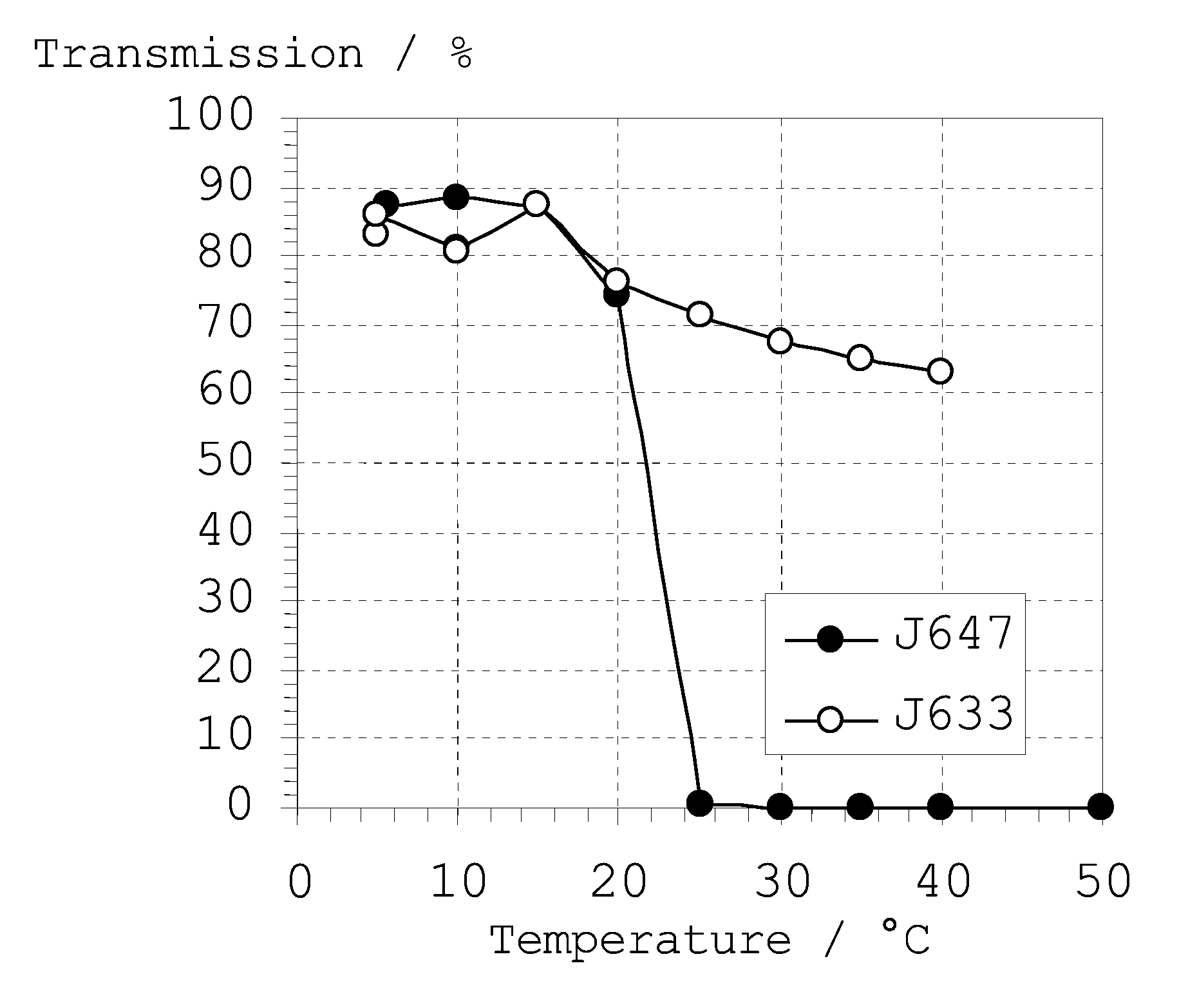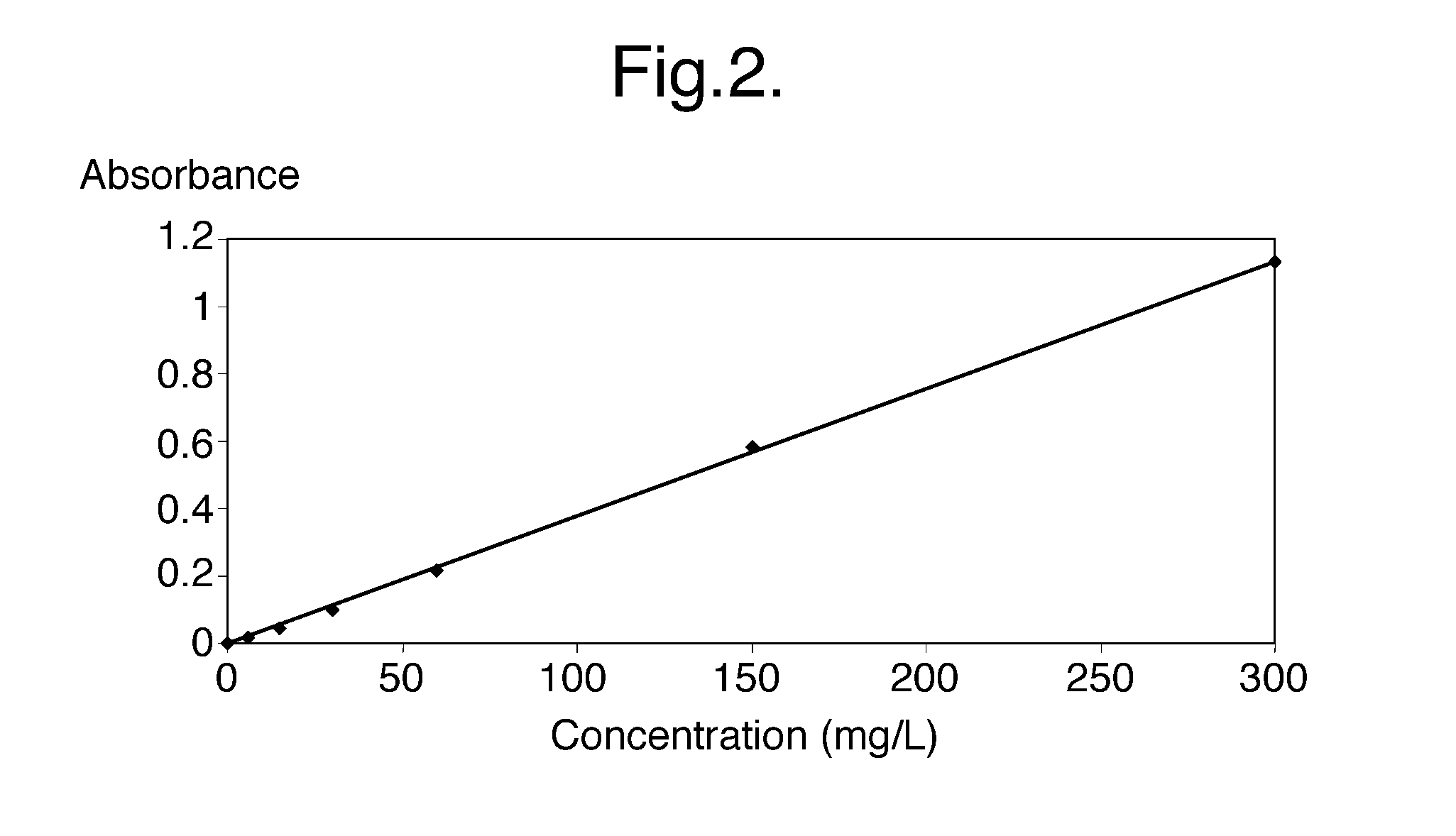Method for producing a foaming agent
a foaming agent and production method technology, applied in the direction of fermentation, etc., can solve the problems of more complex and/or expensive separation processes, and achieve the effect of less foaming, more complex and/or expensiv
- Summary
- Abstract
- Description
- Claims
- Application Information
AI Technical Summary
Benefits of technology
Problems solved by technology
Method used
Image
Examples
example 1
Cloud Point Determination for Antifoams
[0068]The cloud point of an antifoam is measured by the following method, demonstrated here for two commercially available antifoams, one of which has a cloud point (Struktol J647) and one which does not (Struktol J633).
[0069]A solution of 0.2 wt % of each antifoam was prepared in aqueous solution at room temperature. 20 mL samples were poured into a cylindrical glass vials (Turbiscan). The samples were equilibrated at the measurement temperature in the water bath for 1 hour. The turbidity of the sample was determined using a Turbiscan Lab Expert (Formulaction, France). This instrument has a light source with a wavelength λ of 880 nm and an optical sensor 180° from the incident light which measures the percentage of the incident light that is transmitted through the sample at a point 25 mm from the base of the vial containing the sample solution. As the solution becomes more turbid, the transmitted light reduces. Sample vials were transferred t...
example 2
Removal of Antifoam from a Model Solution
[0070]An experiment was performed to demonstrate that antifoams can be removed from model solutions by raising the temperature of the solution above the cloud point, and removing the precipitate by filtration. A 0.3% (w / v) solution of Struktol J647 was prepared by taking an aliquot of 3.00 g Struktol J647 and diluting to 1 L with MilliQ water. Samples of this solution were heated to above the cloud point by placing them in a water bath set at the required temperature for 1 hour. Samples were then gently mixed by swirling and filtered immediately.
[0071]Two different experiments were performed. Firstly, the effect of filter pore size was investigated using filters with pore sizes of 0.45 μm (Pall Life Sciences Acrodisc), 0.2 μm, 1.20 μm and 5.00 μm (all Sartorius Minisart) with a 2 ml syringe at a fixed solution temperature (50° C.). Secondly, the temperature of the solution was varied from 30 to 70° C. (i.e. from 6 to 46° C. above the cloud po...
example 3
Removal of Antifoam from a Model Fermentation Medium
[0077]To demonstrate the removal of an antifoam from a typical fermentation medium, a model fermentation medium was prepared. First, two solutions having the compositions shown in Table 3 were prepared. In a typical fed-batch fermentation Batch 1 would be the starting medium and Batch 2 would be fed gradually through the feed-period.
TABLE 3IngredientBatch 1 (g / L)Batch 2 (g / L)Glucose22440Galactose010Yeast extract1025Potassium dihydrogen orthophosphate2.112Magnesium Sulphate0.62.5Antifoam - Struktol J6470.40.8milliQ waterto 1 Lto 1 L
[0078]Each batch (1 L volume) was autoclaved for 20 minutes at 121° C. The batches were then mixed (50:50) to give a model fermentation medium with an antifoam concentration of 0.6 g / L. The medium was not inoculated or subjected to fermentation, but was tested in its raw form. Samples were heated and filtered to remove the antifoam, and the remaining amount of antifoam was measured, all as described in ex...
PUM
| Property | Measurement | Unit |
|---|---|---|
| cloud point | aaaaa | aaaaa |
| weight ratio | aaaaa | aaaaa |
| cloud point | aaaaa | aaaaa |
Abstract
Description
Claims
Application Information
 Login to View More
Login to View More - R&D
- Intellectual Property
- Life Sciences
- Materials
- Tech Scout
- Unparalleled Data Quality
- Higher Quality Content
- 60% Fewer Hallucinations
Browse by: Latest US Patents, China's latest patents, Technical Efficacy Thesaurus, Application Domain, Technology Topic, Popular Technical Reports.
© 2025 PatSnap. All rights reserved.Legal|Privacy policy|Modern Slavery Act Transparency Statement|Sitemap|About US| Contact US: help@patsnap.com



